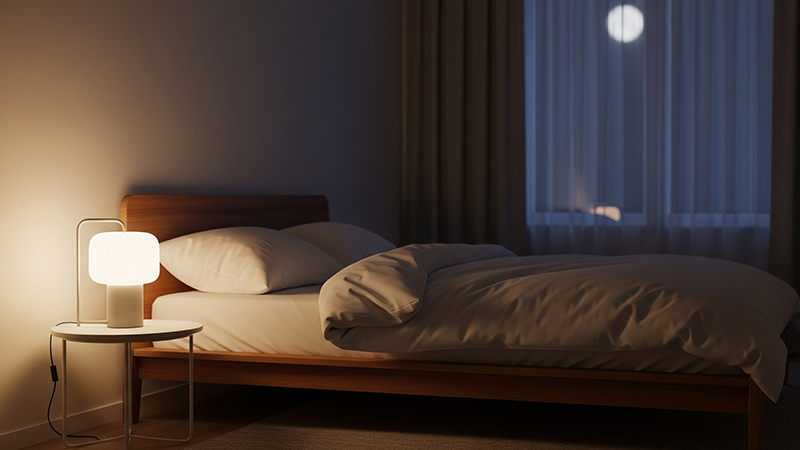A calm bedroom can do more for sleep wellness than you might think. Small design choices send powerful cues to your body about when to power down. With a few practical tweaks, your home can support deeper, steadier rest night after night.
Why Sleep Wellness Matters
Sleep wellness touches every part of daily life. Good sleep supports mood, memory, and focus, and it helps the body repair after stress and activity. When sleep is short or broken, you feel it in your energy, your patience, and your health.
Quality rest also supports the immune system and heart health. It helps regulate appetite and blood sugar, which makes healthy choices easier the next day. This is why shaping your space for sleep wellness at home is worth the effort.
Sleep Wellness Starts With Your Space
Sleep wellness is not only about bedtime routines. It also lives in the air you breathe, the light you see, and the sounds you hear. When your space lines up with your body’s natural rhythm, falling asleep feels easier and mornings feel lighter.
Here’s how you can prepare your home for a good night’s sleep:
Light That Works With Your Body
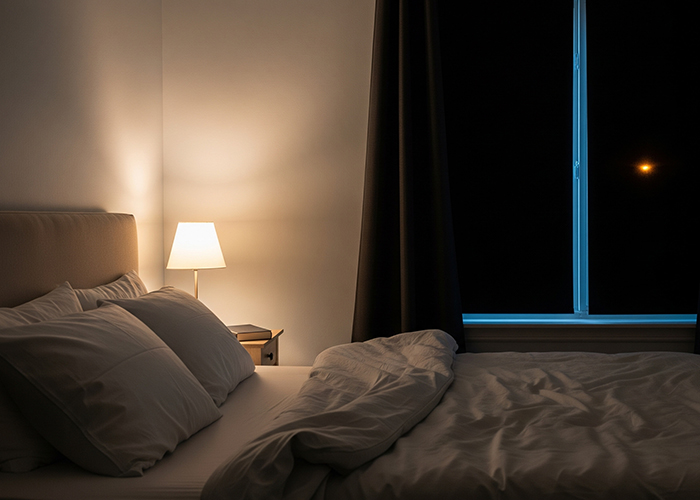
Your brain reads light as a schedule. Bright, natural light in the morning says “wake,” while dim, warm light in the evening says “rest.” Keep windows clear during the day, then switch to warmer bulbs two hours before bed.
Use blackout curtains if street lamps spill into your room. If you need a night light, pick a low, amber tone and place it low to the floor. These small choices protect melatonin and support healthy sleep.
Temperature and Airflow
Most people sleep best when the room sits in the mid-60s Fahrenheit. Cooler air helps your core temperature drop, which is a natural step toward sleep. Use a fan to move air and pick breathable bedding that wicks moisture.
Keep indoor humidity in a moderate range. Too dry and you get itchy skin and stuffy noses. Too humid and dust mites and mold can thrive. Balanced airflow and bedding make healthy sleep feel more natural.
Quiet That Calms
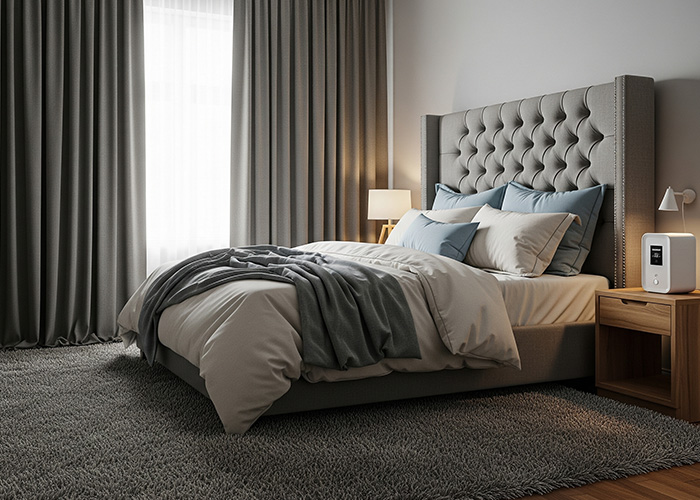
Noise pulls you out of deep stages of sleep even when you do not fully wake. Add soft materials that soak up sound, like rugs, curtains, and upholstered headboards. A simple white noise machine can smooth out traffic or hallway sounds.
Check door sweeps and window seals to cut drafts and outside noise. If your community observes quiet hours, align your routine so your bedtime lands in that window. Calm soundscapes are a core part of sleep wellness.
Mattress, Pillows, and Textiles
Your mattress should support a neutral spine with no pressure hot spots. If you wake with sore hips or shoulders, your surface may be too firm. If your lower back sags, you may need more support.
Match pillow height to your sleep position. Side sleepers often need a taller pillow to fill the shoulder gap. Back sleepers tend to do well with a medium height that keeps the chin level. Wash pillow and mattress protectors often to cut allergens. Consistent, clean support builds home sleep wellness day after day.
Clear the Visual Field
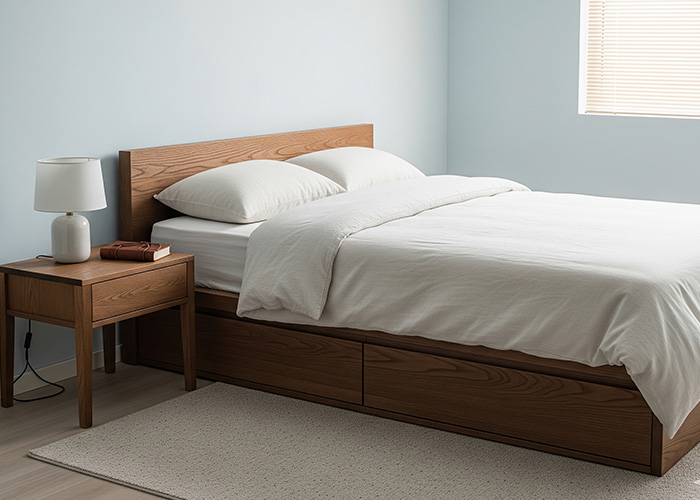
Clutter keeps the mind “on.” Limit surfaces to a few calming items and store the rest. Use closed bins, under-bed drawers, or a slim armoire to hide visual noise.
Keep cords out of sight and tame the tangle with clips. A tidy line of sight lowers mental load. That small feeling of ease feeds sleep wellness at home.
Screens and Tech Boundaries
Blue light and late-night scrolling send mixed signals. Move the TV out of the bedroom if you can. Set phones to Do Not Disturb and charge them across the room or in another space.
If you must use a device late, enable a warm tint and drop the brightness. Try an analog alarm clock so the phone stays away from the pillow. Clear tech rules are simple, reliable healthy sleep tips you can start tonight.
Air Quality and Allergen Control
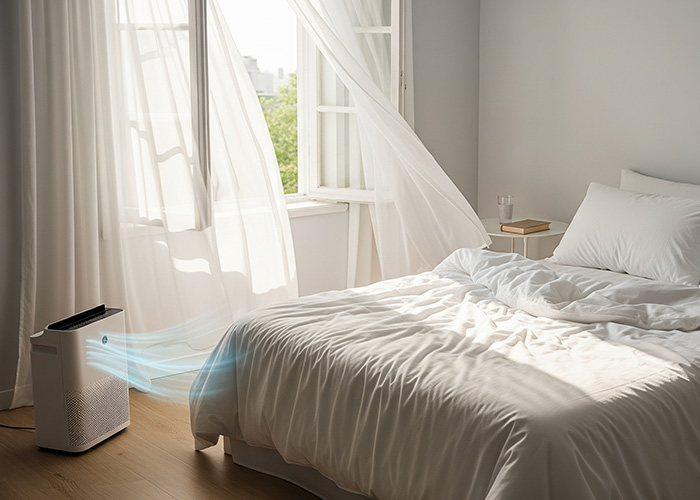
Clean air matters while you sleep. Vacuum with a HEPA filter and wash bedding weekly in hot water. Encase pillows and mattresses if you struggle with dust allergies.
Vent bathrooms and kitchens to keep moisture down. If you use fragrance, go light and avoid heavy sprays on bedding. Fresh, low-irritant air supports steady breathing and better sleep wellness.
Color, Scent, and Natural Touches
Soft, muted colors calm the nervous system. Choose warm whites, gentle blues, or soft greens for walls and larger textiles. Keep accent colors quiet and repeat them across the room for a settled feel.
If scent helps you unwind, try a single note like lavender or cedar in a small dose. A plant or two can be pleasant, but keep leaves dust-free and avoid strong pollen if you are sensitive. Natural textures, like cotton or linen, add comfort without visual clutter.
Daytime Habits That Help at Night

Your bedroom does a lot, but your day sets the stage. Get outside light within an hour of waking, even for a short walk. Move your body during the day and leave intense workouts a few hours before bed.
Limit caffeine after mid-afternoon and keep naps short and early. These are simple, proven healthy sleep tips that make your night routine more effective. When daily rhythm is steady, sleep wellness follows.
Small-Space and Shared-Home Solutions
Not every home has a spare room, and many people share space. A tall bookshelf or curtain can create a “sleep zone” in a studio. Eye masks and soft earplugs help when partners keep different hours.
Talk through quiet times and light rules with family or roommates. Give pets a consistent sleep spot so they do not pace across the bed. Clear, kind agreements make home sleep wellness easier for everyone.
Your Bedside Routine
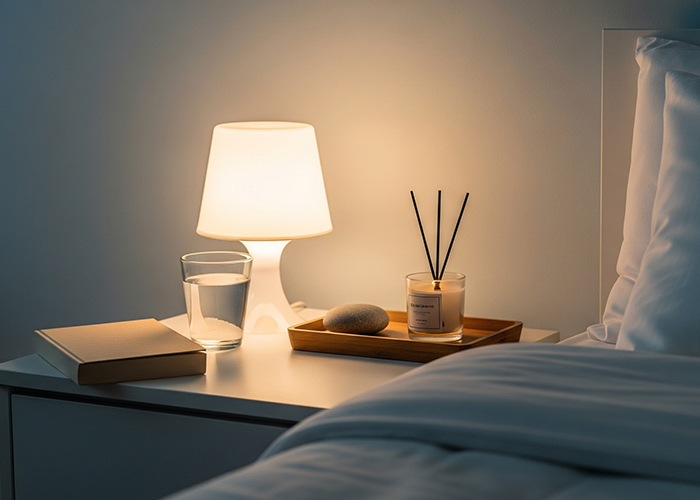
What happens in the last hour counts. Pick two or three wind-down steps you can keep every night. You might read a paper book, stretch gently, or write a short to-do list for tomorrow.
Keep a small tray with only what you use: water, lip balm, a book, and a lamp. When the setup is simple, you are less likely to slip back into screens. This rhythm signals your brain that sleep is coming.
Laundry, Cleaning, and Allergies
Bedding picks up skin cells and oils through the week. Wash sheets weekly and pillowcases more often if your skin is sensitive. Rotate your mattress a few times a year if the maker allows it.
If seasonal allergies flare, shower before bed and keep pets off the pillows. These steps take minutes and build long-term sleep wellness you can feel.
A Good Night’s Sleep
Sleep wellness grows from steady, everyday choices. Shape your space to match what your body needs, and let routine do the rest. A restful home makes it easier to fall asleep, stay asleep, and wake with real energy.
Related Articles:
- HOA Back-To-School Checklist: Simple Steps For A Smooth Start
- Health And Wellness Tips For The Fall
- Do Multivitamins Work? The Truth About Multivitamins

